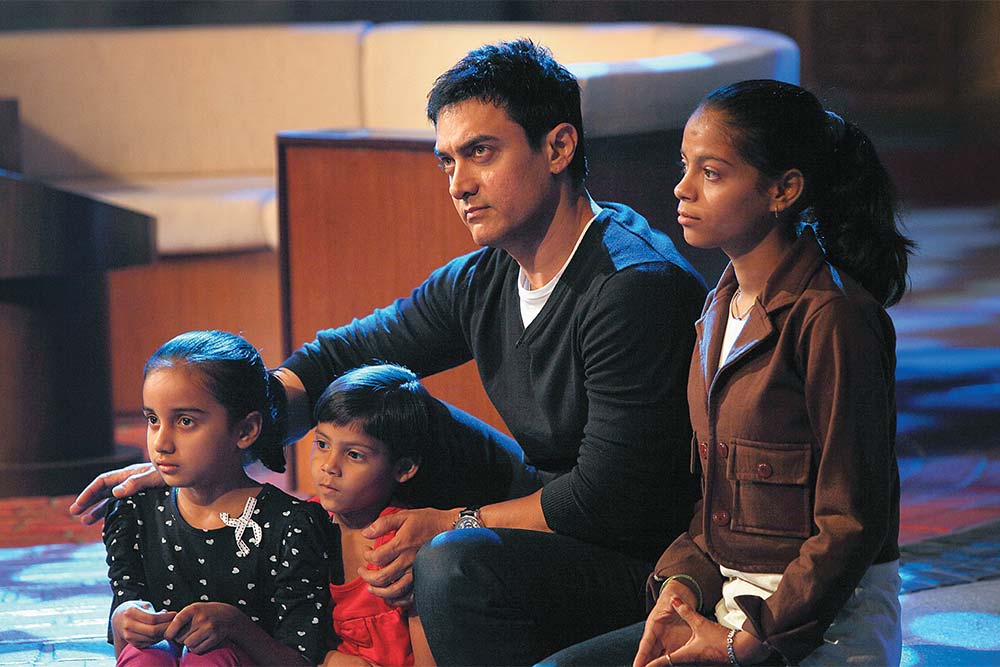They say numbers don’t lie. And the cold, hard truth is that Satyamev Jayate (SMJ) hasn’t lived up to its hype. Never mind the thousands of Facebooks ‘likes’, the millions of views on YouTube and the innumerable tweets on Aamir Khan’s chat show with a conscience — the gold standard of success in TV programming is the rating point and that says SMJ has, shall we say, underperformed. Hit prime time weekday shows (usually soaps) on cable TV get consistent ratings of 3.5-4, but against an anticipated 6-7 gross ratings points (GRP), Star India’s most-expensive show ever has garnered average all-India ratings of only 2.3 on its flagship channel Star Plus, in the crucial 15-44 age group (see: A big miss), according to media planners.
That’s bad news for Star. Not because it’s out of money on the show (it’s not, but more on that later), but because clearly it hasn’t hit on a formula that has repeat value. SMJ was pre-sold to advertisers who paid a whopping Rs.8-10 lakh for a 10-second spot — incidentally, that’s the highest-ever advertising rate on Indian television. Now that the show hasn’t garnered the promised viewership, not only is its future (a second season) in question, it’s also doubtful that Star will be able to pre-sell any other show at such ridiculously high rates. Of course, Star insists the response to the show has been “encouraging”. “The show has delivered like no other in impact, reach and perception,” says Star India CEO, Uday Shankar.
It could be argued that a 2.3 rating for a Sunday 11 am show is fantastic — the average rating for a similar time slot is 0.4-0.5 GRPs. But a rating of 0.4 usually fetches an ad rate of Rs.25,000-30,000, while a rating under 3 gets Rs.50,000-1 lakh on prime time (7-11 pm) on Star Plus. In fact, advertisers don’t pay more than Rs.1.5-2 lakh for a prime time slot on Star Plus where shows like Saath Nibhana Saathiya consistently get ratings of 3.5-4.
But Star doesn’t need to worry about getting advertisers for the remaining episodes of SMJ — even in a bad market, it had sold over 80% of its ad inventory for the 13-episode show before it went on air. Airtel reportedly paid Rs.20 crore to be the title sponsor; other sponsors include Coca-Cola, Axis Bank, Johnson & Johnson and Reckitt Benckiser.
SMJ has been an expensive show to produce. Industry sources say each episode costs Star close to Rs.6 crore, including Rs.3.5 crore paid to anchor Aamir Khan. The 90-minute show has 15 minutes of ad time (90 spots of 10 seconds each). Back-of-the-envelope calculations suggest that Star has already earned at least Rs.5.76 crore per episode, if indeed 80% ad inventory was sold at such high rates. Which means the broadcaster is more than likely to break even in season one. “It won’t hurt Star even if the show makes a Rs.5-10 crore loss. But advertisers would want to renegotiate rates for the next season,” says the CEO of a leading Hindi general
entertainment channel.
Indeed, it won’t be so easy going forward. Media planners say ad rates should be slashed at least 40-50% if more advertisers are to come on board. “All the buzz is for the show, not the advertisers. Why will the advertisers pay for that buzz,” questions Nikhil Rangnekar, CEO (media and analytics), Spatial Media. That’s a thought echoed by Ashish Bhasin, chairman and CEO, Aegis Media, who says his advice to clients will be to invest in the show if there is a brand fit, but only at the right price. “The price they would pay has to be commensurate to the ratings that the show generates,” he points out.
A show like SMJ may never win the ratings race. Reason: it’s not just about the time slot or the serious subject matter — there’s also the fact that episodes are unrelated, so appointment viewing chances are reduced. “I will not touch it unless the rates are halved,” agrees the marketing head of a Delhi-based FMCG company. “I would prefer a Kaun Banega Crorepati, which is pure entertainment but has high ratings as well.”
The social angle
T Gangadhar, managing director of MEC, a GroupM media buying agency, recommends that Star sell the social media impact SMJ has generated. “The show is neither bad nor wow, in terms of ratings, but advertisers haven’t got their pound of flesh. I expected the broadcaster to turn it into a case study of how advertisers can capitalise on social media along with traditional cost per rating point (CPRP),” he says.
There’s no doubt that online, at least, SMJ is a big hit. According to Viewers Speak, a scan of TV programme-related conversations on various social media platforms, 40% conversations on Hindi TV programmes during weekdays over the past few weeks have been around the show. The number goes as high as 76% during weekends. Individual episodes have 2 million viewers on YouTube and SMJ’s Facebook page has 25,000 ‘likes’. So, many in the media think there should be a different currency for judging shows. “It’s a myth that TV rating points reflect reality. But there is an even larger universe beyond that, which needs to be taken into account,” says Sathyakumar Namakkai, president and head, DDB Mudra Max Media, a media solution provider. Right now, though, TRPs are the only truth advertisers recognise.












 Just one email a week
Just one email a week